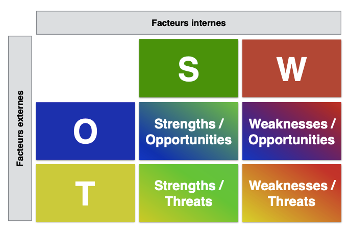Reinvent your business to be more competitive!
MindForest partners with Fit 4 Resilience: to help companies reinvent themselves after the crisis COVID-19
The context
The COVID-19 pandemic was not only associated with implications on our health, but also with dramatic economic consequences. Following the example of its European neighbours, the Grand Duchy of Luxembourg is providing strong support to small and medium-sized enterprises to cope with these difficulties.
This is why the Fit 4 Resilience programme was launched in Luxembourg. This crisis exit and strategic repositioning programme was developed by Luxinnovation and is subsidised by the Ministry of Economy. Theprogramme, for which MindForest is an approved consultant, targets SMEs with a head office in Luxembourg and includes an internal and external analysis of the impacts of the crisis, as well as a study of the current strategy leading to the production of an action plan – or a strategic repositioning – that takes the company’sdigital maturity into account.
SMEs wishing to benefit from this programme can receive a flat-rate grant of 50% of the fees paid to the consultant. The subsidy is transferred to the company upon receipt of its application to the Minister (upon subsequent presentation of the necessary supporting documents).
Details of eligibility can be consulted under the Luxinnovation link
What is the advantage of working with MindForest?
MindForest is an accredited partner of the Fit 4 Resilience programme, with considerable experience in the specific issues of SMEs. Thanks to its specialization in change management for over 20 years, MindForest hasa deep insight into the Luxembourg economic fabric and stakeholders involved, which enables us to provideexpert support in the fields of strategic redefinition and implementation. We guarantee a close collaboration with Luxinnovation throughout the project to ensure continuous alignment. By putting the human factor first, we are able to provide tailor-made solutions that meet the client’s expectations.
Moreover, MindForest has also worked closely on other support programmes: see the MindForest website
Internal and external analysis
The internal analysis includes a literature review and a SWOT analysis, taking into account the Business Canvas Model Canvas (BCM).
The SWOT analysis focuses on finding the right answers to the following questions:
- What do we have that we want to keep? (strengths)
- What do we have that we don’t want to keep? (weaknesses)
- What don’t we have that we would like to have? (opportunities)
- What don’t we have and we do not want to have? (threats)

The BCM makes it possible to highlight internal processes as well as the external relationships of the company. The focus is on 9 priority areas:
- Key Partners – The company’s most important partners
- Key Activities – the company’s processes and regular/necessary activities
- Key Ressources– personnel, competences and fundamental funding
- Value Proposition – the products and services provided by the company
- Customer Relationship – the customer experience
- Channels – the communication, sales and distribution channels used
- Customer Segments – the company’s regular customers
- Cost Structure – the main cost centres
- Revenue Structure – the main sources of revenue
The canvas also helps to determine the company’s level of digital maturity. The results of the internal factors on one side and the external factors on the other are summarised in the TOWS matrix.

Strategic repositioning
After examining the most relevant internal and external factors in more detail, these are are translated into an action plan to facilitate the targeted implementation of the strategic reorientation. In order to be able to assess progress on the new objectives, certain indicators (Key Performance Indicators) are agreed during a workshop. In order to channel the strategic reorientation, the performance of the organisation will be broken down based on the Balanced Scorecard methodology, which recommends monitoring the company’s success based on 4 fundamental axes[1]:
- Financial: This step deals with the company’s financial issues and how it has evolved in terms of hard numbers since the Balanced Scorecard method was launched. It can cover sales, revenue, expenses and any other financial aspects that you may wish to measure to improve your business.
- Internal (Processes): This axis measures the requirements and critical customer Although customers do not really care how they get their products and services, this step manages and tracks supply chain operations, assembly and other internal processes designed to get products and services to customers.
- Customers: This axis measures customer satisfaction and performance requirements. At this stage, the essential characteristics that customers expect from the products or services are determined.
- Learning & Growth: Focuses on how employees are trained, how knowledge is acquired and how it can be used to maintain a competitive advantage in the marketplace.
The different elements of the action plan are elaborated whilst also taking the 17 Sustainable Development Goals into account, which can be consulted in more detail under the sustainable development link
Final report
The final report includes all the documents produced during the various workshops, interviews and analyses. It summarises discussions about the strategic choices made and the implementation of a short and medium-term roadmap (including reflections on the circular economy, regionalisation and digitalisation). The objective is to determine in concrete terms the actions (responsibilities, means and deadlines) in the short term to relaunch the activity and those in the medium term to ensure a relevant strategic repositioning.
At the end of this period of reflection, the company may also be directed towards other public aid schemes enabling it to continue its transformations.
[1] https://leansixsigmabelgium.com/tools-dmaic/balanced-scorecard/ [09.07.2020, 15:00]
WANT TO RECEIVE OUR LATEST THOUGHT LEADERSHIP CONTENT?









